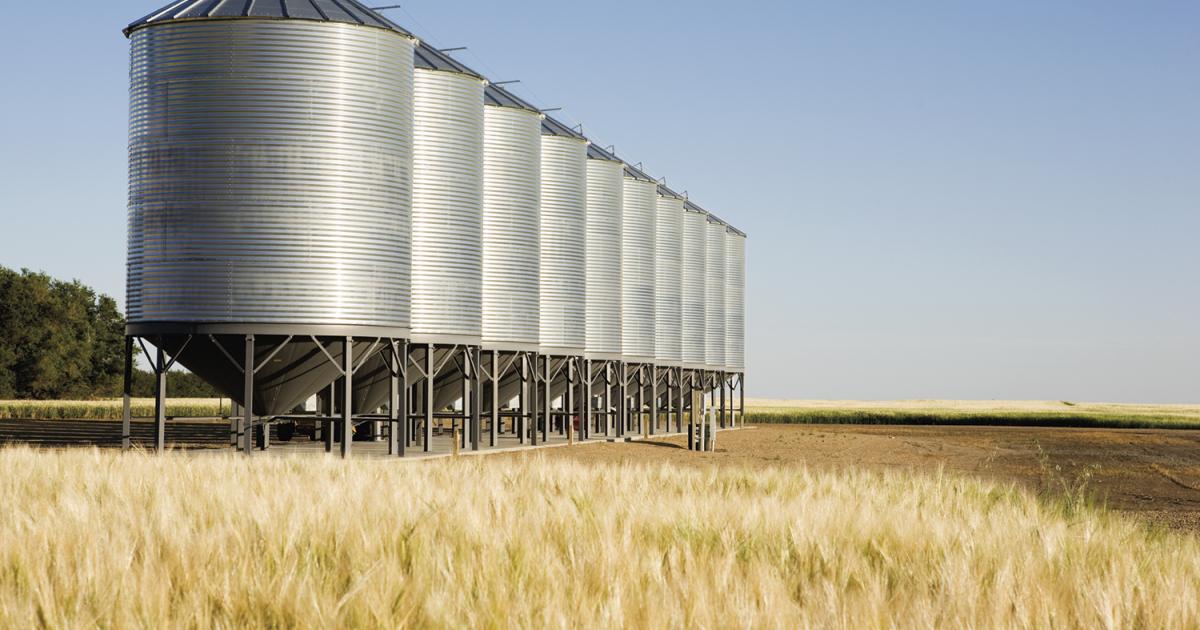Grain can be stored in many types of facilities, but all storage options should keep the grain dry and provide adequate aeration to control the grain temperature.
“The important point is that all storage options should keep the grain dry and provide adequate aeration to control grain temperature,” says North Dakota State University Extension Agricultural Engineer Ken Hellevang. “Grain must be dry and cool (near the average outdoor temperature) when placed in alternative storage facilities, because providing adequate, uniform airflow to dry grain or cool grain coming from a dryer is not feasible.”
Storing in bags
Storing grain in poly bags is a good option, but it does not prevent mold growth in damp grain or insect infestations. Place grain in the bag at recommended storage moisture contents based on grain and outdoor temperatures during the potential storage period.
Hellevang also has this advice:
Select an elevated, well-drained site for the storage bags. Run the bags north and south so solar heating is similar on both sides. Sunshine on just one side heats that side, which can lead to moisture accumulation in the grain and spoilage on the cool side.
Monitor the bags for damage. Wildlife can puncture the bags, allowing moisture in, which can lead to spoilage and the grain smell being released, which attracts more wildlife.
Monitor the grain temperature at several places in the bags.
Never enter a grain bag because it is a suffocation hazard. If unloading the bag with a pneumatic grain conveyor, the suction can “shrink wrap” a person.
Cooling stored grain
Cool grain with aeration to extend the allowable storage time and reduce the potential for insect infestation. Temperatures below about 60 degrees reduce insect reproduction. Extended exposure to temperatures below about 30 degrees can kill insects.
Cooling grain as outdoor temperatures cool will reduce moisture migration and the condensation potential near the top of the grain pile. Also, the grain should be cooled because grain moisture content and temperature affect the rate of mold growth and grain deterioration. The allowable storage time approximately doubles with each 10-degree reduction in grain temperature.
Aeration ducts need to have perforations sized and spaced correctly for air to enter and exit the ducts uniformly and obtain the desired airflow through the grain. The maximum spacing for aeration ducts is equal to the grain depth to achieve acceptable airflow uniformity.
Long-term grain storage
Grain has an acceptable storage life before the quality is reduced enough to impact its value. Allowable storage time is cumulative, so consider the amount of storage life remaining when deciding if you can store the grain longer.
For example, if corn is stored at 14 percent moisture and 60 degrees for two months (November-December), then cooled to 40 degrees for four months (January-April), then stored through the summer months (May-August) at 70 degrees, approximately 90 percent of the storage life has been used. That means little expected allowable storage life is remaining if the grain is going to be stored for another year. Grain going into storage for a second year needs to have been kept cool and dry during the first year and have few broken or cracked kernels.
“Remember, airflow through the grain permits grain temperature to be maintained, but it does not extend the allowable storage time,” Hellevang says.
With more soybeans going into storage this fall, the immediate issue is lack of storage and a limited number of less-than-ideal alternatives,” Hellevang says.
“Soybeans can be a challenge to store,” he notes. “Soybeans need to be harvested at 11 to 13 percent moisture to limit cracks in the seed coat and cooled with aeration to maintain their quality. Any storage option needs to prevent water intrusion and have aeration to control the bean temperature.”










